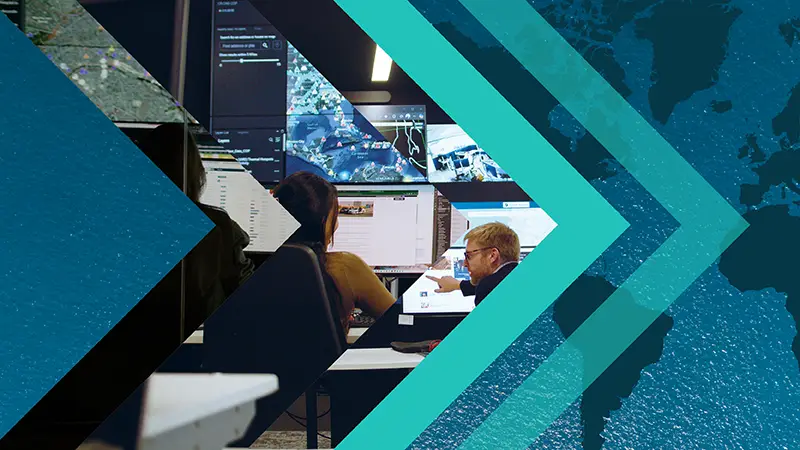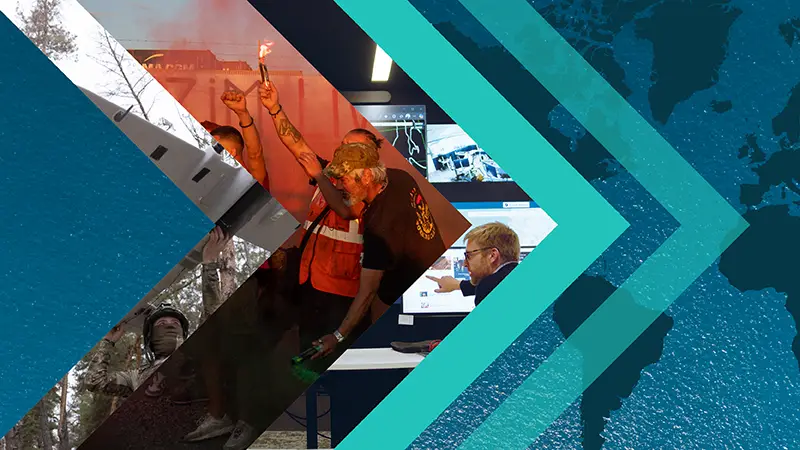
The New Rules - No Rules World
In 2026, companies face a world where traditional rules are fading.
Competition for compute will be one of the defining drivers of geopolitics and business in 2026. Countries and companies without sufficient compute to develop and deploy leading-edge AI risk being left behind. But access to compute is increasingly contingent on technology, infrastructure, and talent bottlenecks. And in 2026, the biggest compute challenge for companies may be permission: legal, political, and geopolitical.
Compute refers to the technologies including hardware, software, and infrastructure used to process data. It encompasses all components from calculations performed by advanced microchips to the software used by computers, to the networking, storage, power, and water infrastructure that makes modern economies function.
It's a numbers game: more compute can run more complex applications, produce more sophisticated products, and generate more valuable insights. Over time, the gap between the compute "haves" and "have nots" will widen as investment and talent flock to the technology frontier.
Unsurprisingly, governments have their thumb on the scale: access to leading-edge hardware and software that powers compute is geopolitically gated. Export controls and other regulatory and national security barriers on design software, fabrication tools, critical minerals, microchips, and quantum computing are exacerbating an already unequal landscape of capability.
In 2026, getting access to compute will require diplomacy as much as money. For firms deploying AI in a decentralised way, this will mean uneven performance, rising costs, and growing uncertainty over which markets can access advanced compute.
Underpinning the competition for compute are physical constraints: power capacity and water availability. Data centre power consumption is growing by over 10% annually – 30% annually for AI-focused data centres – and is forecast to double over the next five years, according to the International Energy Agency (IEA). Data centre buildouts worldwide are colliding with infrastructure limits, environmental impacts, and local community opposition.
As a result, the compute contest in 2026 carries more social and political risks. Competition for power and water supplies is activating societies against construction projects worldwide. Concerns about AI's impact on labour markets will provoke additional backlash. As they race for first mover advantages in compute, companies will have to ensure their social licenses to operate are not undermined by moving fast and breaking things.
The compute contest is deeply entangled with cyber risks. Model weights, training data, and infrastructure vulnerabilities are prized intelligence assets. Meanwhile, companies are outsourcing compute tasks to managed service providers, often in emerging markets, making these third-party ecosystems valued targets for espionage and cybercrime. In anticipation of quantum computing, "harvest-now, decrypt-later" operations are rising.
As a result, cyber resilience underpins compute competitiveness: a company's ability to protect its environment and vendor network will determine its ability to benefit from innovation. This includes preparing now for a post-quantum future: organisations holding sensitive, long-lived data must begin re-keying now or risk future exposure.
AI regulation is now a reality. China introduced several regulations for AI in late 2025, covering data security, labelling, and model training and complementing existing regulation in the digital space. The EU AI Act, in force since 2024, will cover all AI systems, including high-risk and general-purpose models by August 2026. While the US federal government's AI Action Plan focuses on promoting AI innovation, several US state laws regulating AI products will take effect in 2026.
For many corporates, the real pressure is contractual and reputational. Customers are demanding evidence of appropriate data use, transparent training, and secure deployment of AI systems. Industry groups and standards bodies are advancing AI guidelines and standards. The next two years will see due diligence, contracting, and assurance practices modernise fast.
Investment and innovation are moving faster than oversight can adapt. As capital floods into AI applications and platforms, valuations are inflating beyond proven performance. When new regulations start to bite and compliance costs mount, the market's winners will be those that build governance into their growth, before investors and customers start asking harder questions.

In 2026, companies face a world where traditional rules are fading.

RiskMap 2026 explores the rise of activated societies mobilised by grievance, inequality, and distrust.

In 2026, organised crime is evolving to infiltrate industries and supply chains.

In 2026, chaos is no longer exceptional; it’s expected.

Who are the risers and fallers? Where has risk increased or decreased? We have changed 27 countries' risk ratings this year. Download our global and regional maps now to find out.

Nick Allan, Control Risks CEO, looks ahead to the trends shaping business in 2026 and unpacks how businesses can remain resilient.

Get a deeper sense of what these trends mean for your business. Led by our experts, our bespoke interactive RiskMap briefing sessions are shaped by your budget and strategy.

Holistic digital risk management to ensure the security, integrity and resilience of people, information and systems. Manage technology risks and protect your organisation's assets.

Whether you are facing a complex crisis in an opaque jurisdiction or an imminent threat to life, Control Risks can help you navigate even the most difficult of circumstances.

Visit our Digital Risks resource hub below to learn more about how we can work with you to prioritise the security, integrity and resilience of your people, information and systems, to fully realise the benefits of digitalisation.